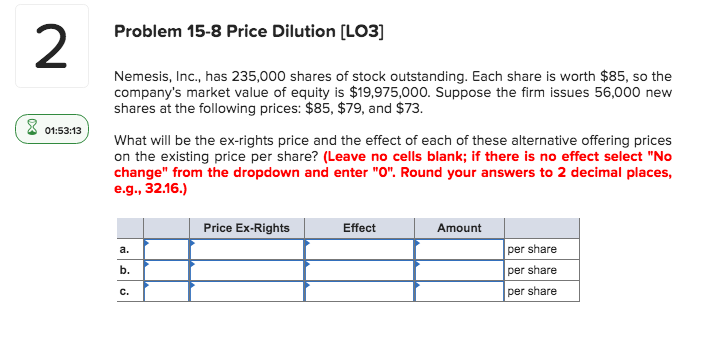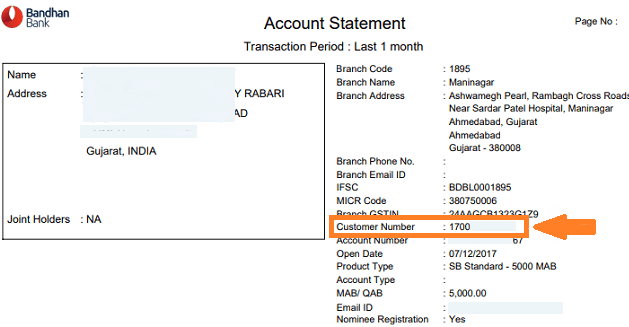LIFO Reserve Formula, Calculator and Example LIFO vs FIFO
Contents:


Therefore, the stockholders must be able to find a uniform space to analyze any company’s health irrespective of cost method. Although the choice of LIFO over any other method does not affect the cash flow related to sales, it affects the cost of goods sold. The LIFO liquidation’s effect on the cost of goods sold would affect gross income, which affects income tax, which in turn affects the operating cash flow. During periods of rising inventory unit costs, inventory carrying amounts under the FIFO method will exceed inventory carrying amounts under the LIFO method.
This requirement can force how to calculate overtime pay to calculate the difference in the inventory value under those methods. To compute the FIFO amount of cost of goods sold of company A, the change in the LIFO reserve account during the period would be subtracted from the LIFO amount of the cost of goods sold of company A. Based off of this information, one can assume that if a company uses LIFO, the recorded amount of inventory is not an accurate reflection of cost of the current period. For this reason, if LIFO is applied on a perpetual basis during the period, special inventory adjustments are sometimes necessary at year-end to take full advantage of using LIFO for tax purposes.

In order to ensure accuracy, a LIFO reserve is calculated at the time the LIFO method was adopted. The year-to-year changes in the balance within the LIFO reserve can also give a rough representation of that particular year’s inflation, assuming the type of inventory has not changed. The LIFO reserve is an accounting measure that looks at the difference between the FIFO and LIFO cost of inventory. Assuming that periodic inventory records are kept in units only, compute the inventory at April 30 using LIFO and average-cost. When asked whether they’d like to lower their income taxes, most dealership owners would answer, “Sure, sign me up! ” One of the most effective ways for dealerships to accomplish this is by adopting LIFO accounting.
Uses of LIFO Reserve
It is critical when companies use different approaches to evaluating inventory internally and externally. In accounting, LIFO reserve refers to the contra account that includes the balance for that difference. It can help explain the variance between the cost of goods sold and inventory value under both approaches. There are two main inventory valuation methods in accordance with generally accepted accounting principles ,LIFOandFIFO. It is common for companies to use the FIFO method to manage their inventory internally, while leveraging the LIFO method for financial statement presentation and tax purposes. Reflects the difference between inventory at the lower of LIFO cost or market and inventory at replacement cost or at the lower of some acceptable inventory accounting method , or market.
- Nevertheless, the purchase price of the stock will definitely be impacted by the LIFO reserves.
- Our Personal Tax Guide highlights tax planning ideas that may help you minimize your tax liability.
- Repealing LIFO would disincentivize inventory investment, hampering efforts to make U.S. supply chains more resilient.
- It is clear that such comparison basis will cause confusion making users believe that Y is better than X.
- On the surface, using LIFO accounting would appear to be an easy call for dealerships.
On top of that, it can also apply to calculating the cost of goods sold under each method. II. For income statement purposes, the more recent costs are matched against the current revenues under the LIFO assumption. IFRS is balance sheet oriented and, on this basis, disallows LIFO as an inventory method. Applying LIFO on a perpetual basis during the accounting period, results in different ending inventory and cost of goods sold figures than applying LIFO only at year-end using periodic inventory procedure. Remember these adjustments/entries are not made in entity’s general purpose financial statements rather form part of entity’s internal financial statements or memorandum records. If entity has to report LIFO reserve in general purpose financial statements , it will go innotes to the accounts.
Inventory, LIFO Reserve
In a persistently deflationary environment, it is possible for the LIFO reserve to have a negative balance, which is caused by the LIFO inventory valuation being higher than its FIFO valuation. First-in, first-out is a valuation method in which the assets produced or acquired first are sold, used, or disposed of first. On the surface, using LIFO accounting would appear to be an easy call for dealerships.
Performance Food Group Company Reports First-Quarter Fiscal … – Business Wire
Performance Food Group Company Reports First-Quarter Fiscal ….
Posted: Wed, 09 Nov 2022 08:00:00 GMT [source]
You might want to disclose the effect of LIFO liquidation on your COGS in your financial reporting. You can compare the figures with the ones you would have gotten had you been able to avoid LIFO liquidation. FIFO InventoryUnder the FIFO method of accounting inventory valuation, the goods that are purchased first are the first to be removed from the inventory account. As a result, leftover inventory at books is valued at the most recent price paid for the most recent stock of inventory. As a result, the inventory asset on the balance sheet is recorded at the most recent cost. Discuss how the use of standardized costing and inventory costing methods would impact the financial reporting and results for a company like Coca-Cola.
Explain LIFO Reserve and LIFO Liquidation
Compute the cost of goods sold assuming periodic inventory procedures and inventory priced at FIFO. In addition, when using LIFO, you must record the LIFO reserve in your inventory records while also performing annual LIFO valuations. The extra effort and cost incurred to complete these accounting and recordkeeping tasks may dissuade some dealerships from opting for LIFO over FIFO accounting. This results in a LIFO reserve, which is the difference between LIFO and FIFO inventory calculations.
Hawkins, Inc. Reports Third Quarter Fiscal 2023 Results – GlobeNewswire
Hawkins, Inc. Reports Third Quarter Fiscal 2023 Results.
Posted: Wed, 01 Feb 2023 08:00:00 GMT [source]
https://1investing.in/ will result in the most recent higher costs being reported in the cost of goods sold resulting in less gross profit, less net income, less taxable income, and less income taxes than FIFO. LIFO also means that the older lower costs remain in inventory. There are several other methods of inventory accounting, the most common being weighted-average cost. When a unit of inventory is sold, companies can deduct the weighted-average cost of every unit of inventory held. In the example case here, that would mean the company would deduct $31 in inventory costs when they sell a unit in December, leading to $9 in income. Using different inventory methods for internal and external reporting, companies want to evade high corporate taxes during inflation time.
When applying this principle to inventories, companies should deduct the cost of a unit of inventory when it is acquired. LIFO reserve represents the difference between the inventory value under the FIFO and LIFO valuation methods. The former evaluates goods with preference to the latest inventory values. On the other hand, LIFO uses the oldest inventory values for inventory valuation. If prices differ during periods, it can cause that valuation to differ between both methods.
DILLARD’S, INC. MANAGEMENT’S DISCUSSION AND ANALYSIS … – Marketscreener.com
DILLARD’S, INC. MANAGEMENT’S DISCUSSION AND ANALYSIS ….
Posted: Mon, 27 Mar 2023 07:00:00 GMT [source]
Identify the primary benefits in using the costing method that is used to record inventory. Explain at least three reasons that would companies to switch to a different costing method. LIFO is said to favor the income statement, whereas, FIFO is said to favor the balance sheet. • In a stock purchase of a C corporation, what is the intent of the new owners with respect to electing S status?
As explained by the US GAAP, the LIFO Reserve’s purpose is to disclose financial information for fair representation of financial health. Become a Partner Already know Wasp is a perfect match for your business? Sign up here to request entry into our WaspLink Partner Programs. Professor James’ videos are excellent for understanding the underlying theories behind financial engineering / financial analysis.

However, the fact that some industries use LIFO more frequently merely reflects their different structure and greater reliance on inventories. Both LIFO and FIFO rely on the accounting principle of deducting costs from income when goods are sold. U.S. GAAP require all companies that use LIFO to also report a LIFO reserve, which is the difference between what ending inventory would have been under FIFO accounting and its value under LIFO. By using the LIFO reserve of company A, we can find the FIFO inventory and compare the current ratios of both companies. When the external stakeholders are analyzing the company’s financial health and position in the market, they mainly rely on the financial ratio analysis. Financial ratio analysis offers great insight into the performance of the company.
The AnalystPrep videos were better than any of the others that I searched through on YouTube for providing a clear explanation of some concepts, such as Portfolio theory, CAPM, and Arbitrage Pricing theory. Watching these cleared up many of the unclarities I had in my head. Very well explained and gives a great insight about topics in a very short time. I have been using the videos to prepare for the CFA Level II exam.

Financial analysts often use this metric to compare the efficiency of companies within the same industries, but inventory turnover varies wildly by industry. Last-in, First-out and First-in, First-out are two methods of inventory accounting used for both financial accounting and tax purposes. But these impact the tax liability, profits, cash flows, and other financial aspects. LIFO liquidation may also generate positive cash flow and result in higher taxable income and higher tax payments. The year-end balances in a company’s LIFO reserve are $56.8 million in the company’s financial statements for both 2015 and 2016. For 2016, the measure that will most likely be the same regardless of whether the company uses the LIFO or FIFO inventory method is the ______.
If material, reflects an excess of replacement or current cost over stated LIFO value parenthetically on the balance sheet or in a note to the financial statements. The LIFO method is applied for external reports, such as tax returns, given that the LIFO method assigns a higher cost to the goods sold during the year. By raising the cost, less taxable income is reported on the income statement; thus, the overall tax expense is also reduced. In order for external users to not be mislead about the true value of inventory, cost of goods sold, and profitability of the company, there needs to be a reconciliation between the two valuation methods. If the LIFO reserve account balance goes up or down, additional costs are then added on to the costs of the goods the company has sold throughout the year.
In periods of rising prices, constant increases in costs can create a credit balance in the LIFO reserve, which results in reduced inventory costs when reported on the balance sheet. The financial statements of any business are greatly affected by the choice of inventory valuation method. The balance sheet, income statement, cash flow statement, and other key financial ratios reflect the choice and impact stakeholders’ decisions. When a firm reduces its inventory, the old assets flow into income. The COGS figure no longer reflects the current cost of inventory sold. Gross profit margin will be abnormally high and unsustainable («phantom» gross profits).
